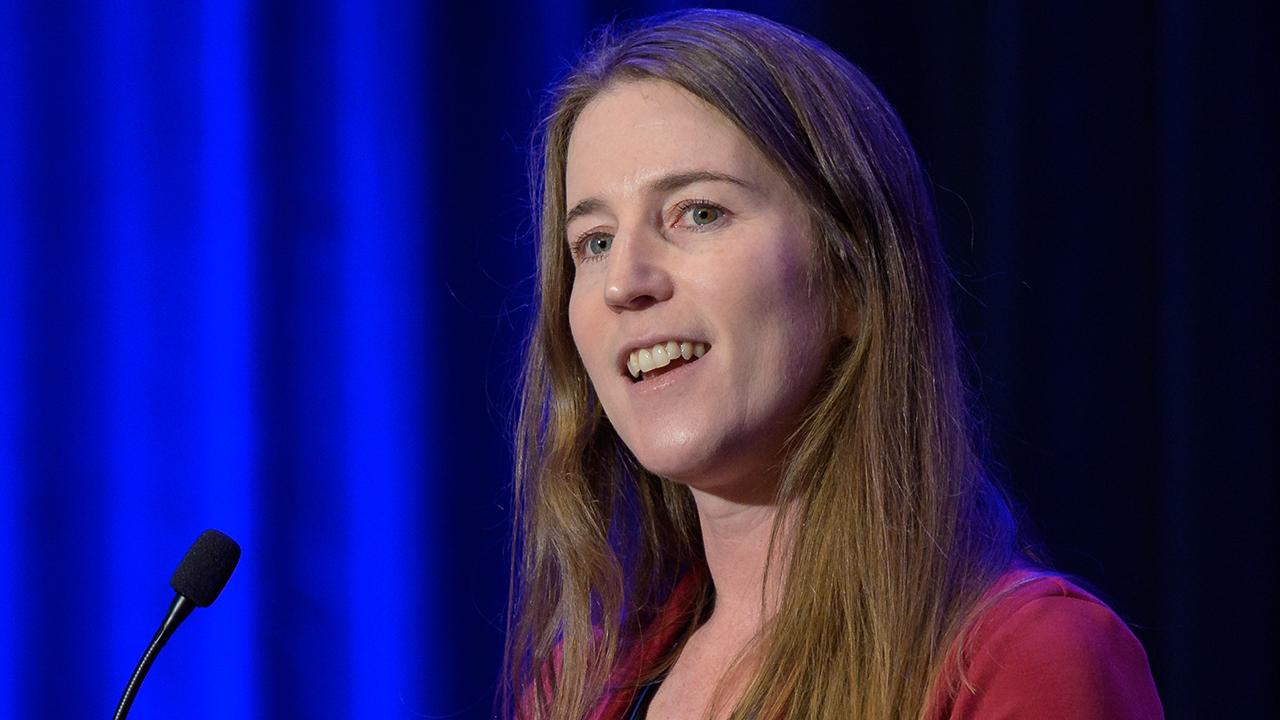
Dr. Kate Calvin
NASA’s Chief Scientist and Senior Climate Advisor - NASA Headquarters
Dr. Kate Calvin is the first person to serve in the dual role of NASA’s Chief Scientist and Senior Climate Advisor.
My first introduction to space was at the Kennedy Space Center Visitor Center when I was, maybe, 10 years old. We did the bus tour. We saw an alligator. I remember seeing all the kids at Space Camp and being really jealous that I wasn’t at Space Camp.
My background is in math and computer science, and I started doing climate research in graduate school. That’s how I got into it formally, but I’ve always spent time outside, looking at nature, trying to figure out how it works.
I joined NASA about a year ago now (January 2022). Before that I was doing climate research for the U.S. Department of Energy. I use math and computer models to try to understand how climate changed in the past and how it might change in the future. NASA hired me to serve as chief scientist and a senior climate advisor.
My job is to connect the science within the agency and communicate NASA science broadly to NASA leadership, other agencies, scientists, and the public. One of the things I really love is I get to learn about science from the scientists as they are working on it. It's really exciting to see what excites people about what they're doing and to learn about what they're working on.
There were so many highlights – my first launch up close, the James Webb Space Telescope first images, the DART impact, Artemis I launch, and the launch of several Earth missions.
I think my favorite part of my first year on the job is the people though. The people at NASA care very deeply about the mission and work hard to ensure that all we do is for the benefit of humanity. It has been great to be a part of the team.
One of the benefits of studying Earth from space is that we can see all of it. The Earth is an interconnected system – what happens in one part of the world has an impact on other parts of the world. By observing Earth from space, we can measure and monitor the planet as a whole and see how it changes over time.
I’m really excited about the Earth Information Center and NASA’s Year of Open Science. As a scientist, it is important to me that people have the information they need to make informed decisions. The Earth Information Center will help bring information about climate and Earth science to people, helping them understand the changes in their community and better plan for the future. The Year of Open Science will help make science more accessible more broadly.
I’ve always had someone who inspired the next step. A high school math teacher got me really excited about math and helped me believe I could do it. A Ph.D thesis advisor introduced me to climate science, and helped me establish a career. A previous boss introduced me to interdisciplinary science, learning about things outside my field.
I didn’t know this job existed when I was younger. In high school, I didn’t know what I wanted to be when I grew up. I just knew I liked math. So I went to college with math as a major, no solid plan, and an open mind. I just sort of let it take me where it would.
I continued to ask questions, thought about what I could do with the information and learned new things. And that’s how I ended up with one of the most exciting jobs I ever could have imagined.
Planetary science is a global profession.

